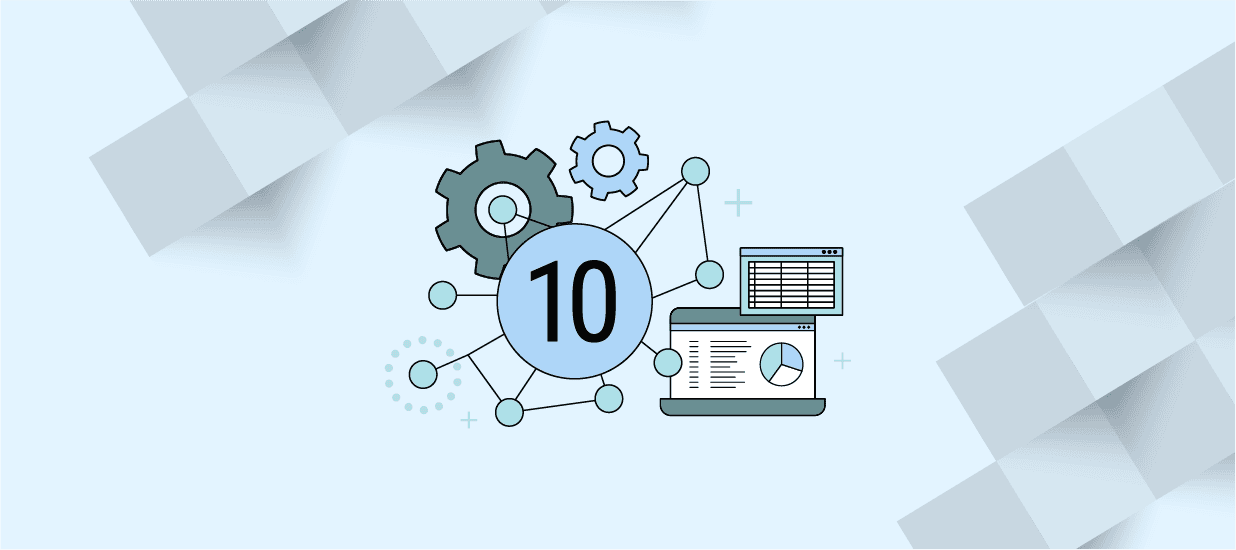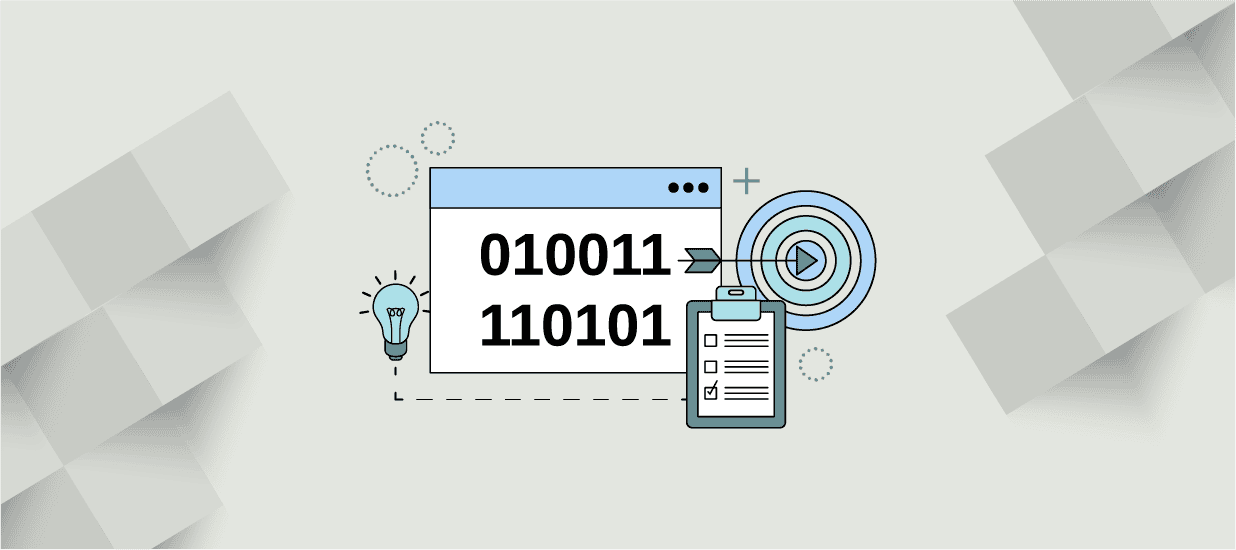Data is one of the most important aspects of any business. It can help you make better decisions, understand your customers, and improve your operations. However, if you don’t have a data strategy in place, you’re not taking full advantage of this valuable resource.
In this blog post, we will discuss 7 questions to ask when evaluating your data strategy. By answering these questions, you will be able to create a plan that grows your company’s data maturity by making the most of its data!
What are 7 Questions You Need to Ask When Evaluating a Data Strategy?
There are many ways to evaluate your data strategy, but you can start with these 7 questions:
- What Data Does Your Business Currently Collect?
- How is The Data Currently Being Used?
- Who Has Access to The Data?
- How is The Data Stored?
- How Often is The Data Updated?
- How is The Data Analyzed?
- What is the Quality of The Data?
Now let’s have a closer look into each of these questions.
Question #1: What Data Does Your Business Currently Collect?
This is the first and most important question you need to ask when evaluating your data strategy. If you don’t know what data your business currently collects, you can’t make informed decisions using data science or analytics!
To answer this question, take a look at your current data sources and list out the types of information they contain. This will give you a good starting point for understanding what data your company has to work with.
For example, your data sources might include:
- User input data (clicks/taps) on your products/apps
- Sales data from your CRM (customer relation management) software
- Financial data from your accounting software
- Marketing data from your website and social media channels
- Customer service data from your help desk
Once you have a list of all the different types of data your company collects, you can start to think about how this information can be used to improve your business!
Question #2: How is The Data Currently Being Used?
Now that you know what data your company collects, it’s time to take a look at how it’s being used. This will help you understand what’s working well and identify any areas for improvement.
To answer this question, start by taking a close look at your current data analysis processes. How are you using data to make decisions? What kinds of insights are you able to generate? Are there any areas where you feel like you could be getting more out of your data?
For example, you might use data to:
- Generate reports on your website or app usage
- Analyze customer behavior to improve your social media marketing campaigns
- Identify trends in your sales data to inform your product development decisions
- Track financial performance to make better business decisions
- Monitor customer satisfaction levels to improve your customer service
If you’re not using data as much as you could be to optimize your business, now is the time to make a change!
Question #3: Who Has Access to The Data?
Data is a valuable asset, so it’s important that you have controls in place to ensure that only authorized individuals have access to it. This is especially important to uphold if you’re handling sensitive information like customer data.
To answer this question, you should review your current data security procedures. Who has access to your data? How is this access controlled? Are there any areas where you feel like your security could be improved?
For example, your data security procedures might include:
- Restricting access to sensitive data to only those who need it
- Using strong authentication methods (like two-factor authentication) to control access
- Encrypting data in transit and at rest
- Regularly backing up data to reduce the risk of loss
- Monitoring for unusual activity that could indicate a breach
By taking a look at your access controls to your data, you can get a better understanding of how secure your information is.
Question #4: How is The Data Stored?
4.35 million USD was lost in 2022 due to data breaches, due to the neglect of data strategies by businesses, so you’ll need to ask more questions on data security. Data needs to be stored securely in order to protect it from unauthorized access and ensure that it can be used effectively.
To answer this question, take a look at the data storage procedures in your business. Where is your data stored? How is it backed up? Are there any areas where you feel like your storage could be improved?
For example, your data storage procedures might include:
- Storing data in a secure and reliable database
- Using only whitelisted IP addresses from corporate VPN for employee access
- Backing up data regularly to prevent loss
- Encrypting data at rest to protect it from unauthorized access
By answering this question about data storage, you’ll be warier about the integrity of your data and where they reside.
Question #5: How Often is the Data Updated?
It’s important to keep your data up-to-date so that you can make decisions based on the most accurate information available. The freshness of data can vary depending on the type of data and how often it changes.
To answer this question, take a look at your current data update schedule. How often are your different datasets updated? Are there any areas where you feel like your data could be fresher?
For example, your data update schedule might include:
- Updating financial data in a trading software product daily
- Updating website usage data hourly
- Updating customer satisfaction social data from Twitter weekly
By understanding how often your data is updated, you can be sure that you’re making decisions based on the most current information available. This is especially important when working with time-sensitive data.
Question #6: How is the Data Analyzed?
Data analysis is the process of extracting insights from data. This can be done using a variety of methods, including manual analysis, statistical modeling, and machine learning. You can also examine the type of data analysis tools used.
To answer this question, take a look at the current data analysis procedures in your business. How is data analyzed? Who is doing this data analysis? Are there any areas where you feel like your data could be better utilized through data analytics?
For example, your data analysis procedures might include:
- Building reports to track key metrics
- Creating dashboards on BI software to visualize data
- Performing statistical analyses to identify trends
- Developing machine learning models to predict future outcome
Some common data science roles involved in data analysis include:
- Data scientists
- Data analysts
- Data engineers
- Business intelligence analysts
- Financial analysts
Some common data tools used are:
- SQL
- Python
- R
- ETL tools
- Tableau
- Power BI
By answering this question, you’ll reveal all the possible tools, methods, and people involved in data analysis.
Question #7: What is the Quality of The Data?
Building on the previous question about data analysis, data quality is a key ingredient used in data analysis. Data can be powerful – but not without clean data. In order for data to be useful, it needs to be of high quality.
To answer this question, reassess the current quality of your data. How do you ensure that your data is accurate and complete? Are there any procedures in place to ensure that all data is clean before you run any analysis?
For example, your data quality procedures might include:
- Running regular checks for accuracy and completeness
- Implementing data cleansing processes to remove errors
- Using data quality tools to automate checks
- Performing manual checks on a regular basis
This will highlight any areas and gaps in your data quality and governance. Bad data is a key sign of a bad data strategy.
Related Questions
What is a Data Strategy?
A data strategy is a plan for how you will use data to achieve your business goals.
To create an effective data strategy, you need to understand your business goals and the types of data that can help you achieve them. You also need to have a clear understanding of your current data situation, including what data you have and how it’s being used. With this information in hand, you can start to develop a plan for how to use data more effectively.
There are many different components that can be included in a data strategy, but some key elements include:
- Data governance: Data governance is the process of defining who can access and use your data. This includes defining roles and responsibilities, setting up security controls, and establishing procedures for managing data.
- Data quality: Data quality is all about ensuring that your data is accurate, complete, and consistent. This involves developing processes and procedures for data entry, validation, and cleansing.
- Data architecture: Data architecture is the process of designing how your data will be structured and stored. This includes defining data models, setting up database systems, and establishing processes for data migration.
- Data analytics: Data analytics involves extracting insights from data in your business. This includes developing methods for data collection, warehousing, and reporting. It also includes using statistical techniques to analyze your data and uncover trends and patterns.
Here are some examples:
- To track website traffic, your data strategy might include using data to analyze your website data to monitor SEO performance
- To improve customer service, your data strategy might include using data to track customer satisfaction levels and identify areas where service can be improved.
No matter what your goals are, your data strategy should include a plan for how you will use data to achieve them.
Developing a data strategy can be a complex undertaking, but it’s worth the effort. When you take the time to develop a comprehensive plan for how you will use data, you can ensure that your data will be used effectively to achieve your business goals.
Why is Evaluating a Data Strategy Important?
Evaluating your data strategy is important for two main reasons.
- First: it allows you to assess whether your current strategy is effective and identify areas where it can be improved.
- Second: it helps you to keep your data strategy up-to-date as your business goals and needs change over time.
How Often Should You Evaluate Your Data Strategy?
You should evaluate your data strategy on a regular basis, at least once per year. However, you may need to evaluate it more frequently if you experience significant changes in your business goals or data situation.
Conclusion
Do you have a data strategy? If not, now is the time to develop one.
By answering the seven questions listed above, you can start to get a better understanding of your current data situation and begin developing a plan for how to use data more effectively. So what are you waiting for? Start evaluating your data strategy today!
Gain Powerful Business Insights with Data
Enroll in Data Science for Business Leaders and learn how to partner with data professionals to uncover business value, make informed decisions and solve problems. It’s essential to communicate effectively with data teams so they can provide business insights you can act on.
Author
-

Austin Chia is the Founder of Any Instructor – where he writes about tech, analytics, and software. With 3 years of experience in the data space as a data scientist and data analyst, he now seeks to help others get started on their own data science journeys through writing. He has a background in healthcare research and healthcare analytics applications.
View all posts








